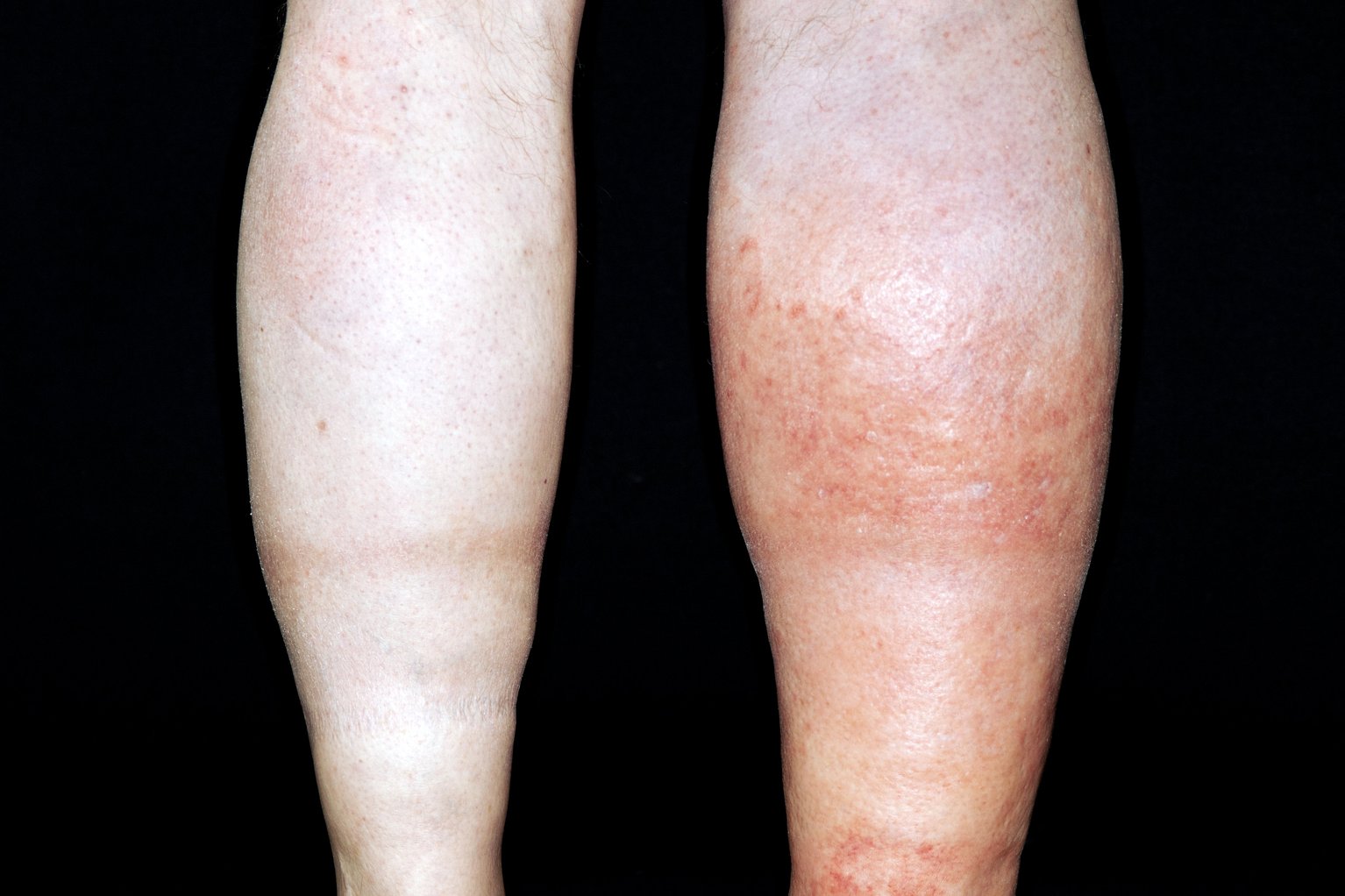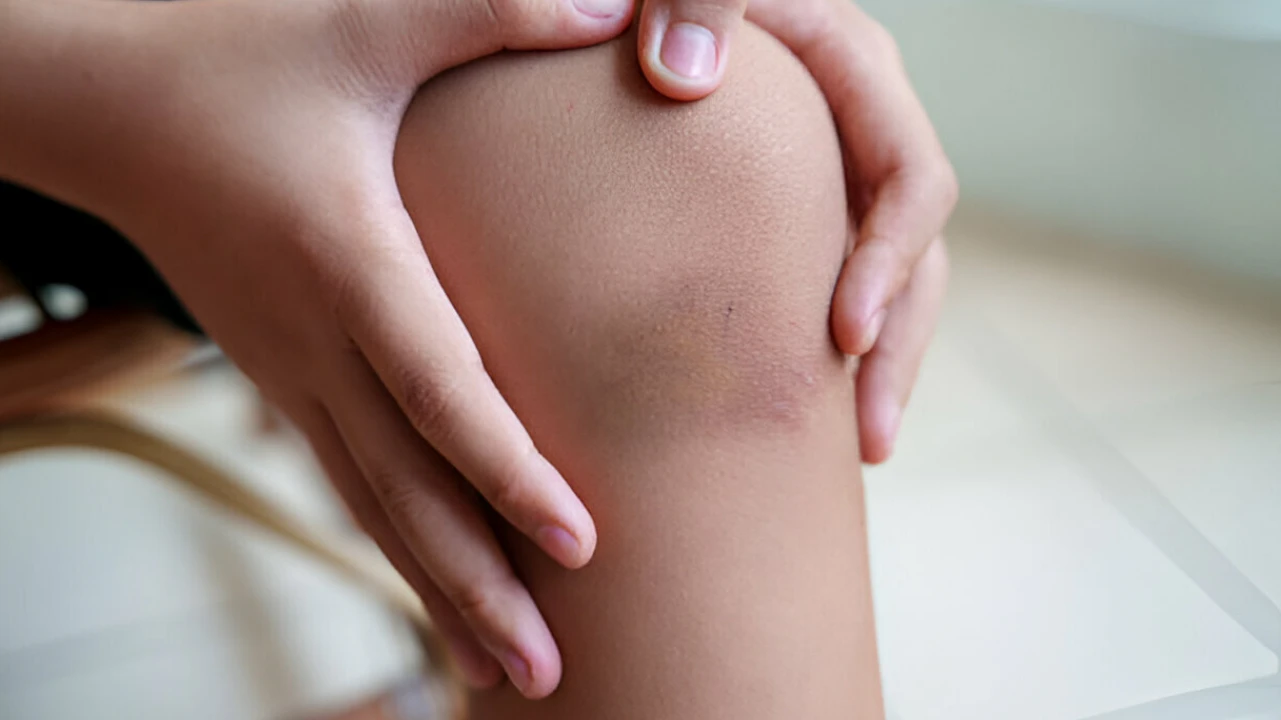Hey there! Have you ever glanced down at your leg and noticed a mysterious mark that made you pause? Maybe it’s a cool color or feels a little off, and unexpectedly you’re wondering, “Wait—is that this just a bruise, or should it be a blood clot?” I’ve been there too, and trust me, it’s totally ordinary to experience a flicker of fear. Those little “what ifs” can nag at you, right? Well, I’m here that will help you sort it out—like a chum who’s were given your returned with some clear, down-to-earth information.
Bruises and blood clots might appear comparable at the beginning glance, however they’re pretty special beneath the floor. A bruise is typically no massive deal—just a badge from lifestyles’s little bumps. But a blood clot, particularly something like deep vein thrombosis (DVT), may be extreme and wishes attention. So, allow’s dive in collectively! I’ll stroll you through what every one is, how they display up, and while you may want to call a medical doctor. Grab a cosy seat, and permit’s determine this out step by step.
What’s a Bruise, Anyway?

Okay, let’s start with the familiar stuff. You realize the ones colorful spots that pop up once you’ve banged your shin at the espresso desk? That’s a bruise—or, in case you need the flowery term, a contusion. It’s what happens when those tiny blood vessels under your skin, called capillaries, take a success and spill a bit blood into the surrounding tissue. That’s why you get that purple flush at the start, accompanied by way of a parade of blues, purples, and maybe even some greenish-yellow hues because it heals.
Picture your pores and skin like a cozy blanket over a network of sensitive pipes. When something smacks into you, it’s like a mini pipe burst—not anything principal, just enough to go away a mark. Your frame swoops in like a cleanup crew, mopping up the spilled blood over a week or , and voilà, the bruise fades away. I used to get these all the time as a kid—strolling around, mountain climbing timber, you call it. My mom would snicker and say, “You’re collecting journey tattoos!” And genuinely, she wasn’t wrong.
Most bruises come from apparent culprits: bumping into things, a tumble, or perhaps a too-enthusiastic recreation of soccer. But ever observe a bruise and suppose, “Huh, in which’d that come from?” Sometimes it’s sneaky—like if you’re on blood-thinning meds or low on certain vitamins. If you’re bruising extra than typical and might’t pin it for your fixtures, it’s really worth a brief chat together with your physician. No stress, just curiosity!
So, What’s a Blood Clot All About?

Now, allow’s switch gears to blood clots. This is wherein we get a touch more extreme, but don’t worry—I’m right right here with you. A blood clot is whilst your blood decides to huddle up and flip from its typical flowy self right into a gel-like blob. Normally, that’s a superhero pass—your body’s manner of plugging a leak if you get reduce. But once in a while, clots form when they shouldn’t, in particular in the deep veins of your leg. That’s deep vein thrombosis, or DVT, and it’s the one we’re that specialize in today.
DVT is like a site visitors jam in your veins—blood gets caught, and matters can lower back up. Why does it be counted? Well, if that clot breaks loose, it would hitch a experience to your lungs and purpose a pulmonary embolism, which is not any shaggy dog story—it’s a actual emergency. My aunt found out this the tough way after a long flight. She felt this bizarre heaviness in her leg and brushed it off as “plane stiffness.” Turns out, it turned into DVT. She’s exceptional now, but it was a be-careful call for anyone.
What causes these sneaky clots? Lots of things—like sitting still for too long (think surgery recovery or a Netflix marathon), an injury, or even your genes playing tricks. Risk factors pile on if you smoke, carry extra weight, are pregnant, or take certain meds like birth control. According to Healthline, DVT hits about 1 in 1,000 folks a year—not super common, but enough to keep an eye out, you know?
How Does a Bruise Feel and Look?

Back to bruises—how do you know it’s just that and not something scarier? Let’s break it down. A bruise is usually flat, like a splash of paint on your skin. It starts red, then goes through its moody phases—blue, purple, maybe black—before mellowing out to green and yellow. The size depends on the “ouch” factor. Small tap? Tiny spot. Big tumble? Could be a whole canvas.
Touch it, and it might grumble a bit—tender or sore, but not screaming pain. Maybe there’s a little puffiness if it’s fresh, but nothing wild. The best part? It gets better fast. In a couple of weeks, your body’s like, “All done here!” and the mark vanishes. I once had this perfect circle bruise on my knee after tripping over my dog—looked like a weird art project. It hurt for a day, then just became a story to laugh about.
Have you ever wondered why bruises change color? It’s your body breaking down that spilled blood, like a slow-motion magic trick. Pretty cool, right? Unless it sticks around too long or shows up with friends uninvited—then maybe check in with someone who knows more than me.
What About Blood Clot Symptoms in Your Leg?

Okay, here’s where you really perk up your ears. Blood clots don’t mess around, and their signs are a little sneakier than a bruise’s. If it’s DVT, you might notice one leg swelling up—maybe your calf or thigh feels puffy out of nowhere. Touch it, and it could be warm, like your skin’s holding onto a secret heat pack. You might see redness or a weird tint, too—not the rainbow of a bruise, but something deeper.
Pain’s a big clue here. It’s not just a “poke it and wince” kind of hurt—it’s more like a stubborn cramp or that Charley horse that won’t quit. And here’s the kicker: it doesn’t fade like a bruise. It might even get worse, with the swelling creeping up or the ache digging in deeper. My aunt described it as her leg “yelling at her” to pay attention. She ignored it at first—don’t make that mistake, okay?
The scary part? If that clot decides to travel, it could hit your lungs. Suddenly you’re gasping, your chest hurts, or you’re coughing up blood—those are 911-level red flags. I don’t say this to freak you out, but because I care. If your leg’s acting up and you’re unsure, let’s err on the side of caution together.
Bruise vs. Blood Clot: Spot the Difference!
So, how do you tell these two apart when they’re both crashing the party on your leg? Let’s make it simple.
Looks: A bruise is like a flat sticker—colorful and surface-level. A blood clot? Think swelling and redness that feels alive, like your leg’s puffed up and mad about it. Bruises shift through a palette; clots dig in with a moody vibe.
Feels: Press a bruise, and it’s tender—ow, but manageable. A clot’s pain is deeper, heavier, like your leg’s carrying a grudge. It might ache even when you’re not poking it, which isn’t a bruise’s style.
Where: Bruises hang out on the top layer, staying put. Blood clots set up camp deeper in your veins, and that swelling can spread downstream. It’s like the difference between a splash on the shore and a wave rolling through.
Still picturing it? Imagine this: a bruise is a little love tap from life, while a blood clot’s a warning siren from your body. Here’s a quick rundown:
- Appearance: Bruise—flat, multicolored; Clot—swollen, red-tinged
- Pain: Bruise—tender when touched; Clot—aching, constant
- Spot: Bruise—skin’s surface; Clot—deep inside
Got a mark you’re side-eyeing? We’ll figure out the next step together.
When Should You Call a Doctor?
Here’s the deal: I’d rather you be overly cautious than regret waiting. If your leg’s swelling up without a good reason—say, no epic hike to blame it on—or it’s warm, red, and hurting like it’s got a mind of its own, don’t sit on it. Especially if you’ve been stuck in one spot lately (hello, road trips) or have risks like surgery in your rearview. Those are blood clot SOS signals.
Why rush? Catching a clot early can stop it from turning into a bigger mess—like that lung thing I mentioned. Doctors have cool tools, like ultrasounds, to peek inside and spot the trouble. They’ll ask about your life lately—travel, habits, how you feel—and might give your leg a gentle once-over. It’s not scary; it’s just them being thorough.
One tip from my aunt’s scare: don’t rub it. I know it’s tempting when it hurts, but if it’s a clot, massaging could send it on a dangerous road trip. Instead, prop your leg up, take a deep breath, and get help ASAP. Better to laugh about a false alarm than wish you’d acted, right?
How to Keep Bruises and Clots at Bay
Let’s flip this—how do we dodge these uninvited guests? Prevention’s half the battle, and I’ve got some tricks up my sleeve.
Bruises: Watch where you’re going—I know, easier said than done when your table’s out to get you. Gear up for sports, and eat some oranges—vitamin C keeps those blood vessels tough. I started snacking on more citrus after noticing random bruises, and it’s like my skin said, “Thanks, pal!”
Blood Clots: Move it! If you’re glued to a chair—work, flights, whatever—stand up hourly and stretch. Keep your weight in check, kick smoking if it’s a habit, and chat with your doc if you’re high-risk. Little steps add up big time.
Bruise Fixes: Got one? Try RICE—Rest, Ice, Compression, Elevation. Ice it first to chill the swelling, then warm it later to speed healing. Over-the-counter pain stuff helps too. Time’s your best buddy here—it’ll fade like a bad memory.
Clot Care: This one’s doctor territory. They might give you blood thinners to calm things down or, if it’s urgent, something stronger to bust the clot. No DIY here—trust the pros. My aunt’s on thinners now and swears they’re her leg’s new BFF.
What’s your go-to for a banged-up leg? I’m all about an ice pack and a good Netflix distraction—works like a charm!
➤ Extra tips, do you want healthy legs? Check out 10 Best Leg Exercises to Build Strong, Muscular Legs.
Wrapping It Up—You’ve Got This!
So, there we are! Bruises are like life’s little high-fives—annoying but harmless. Blood clots, though? They’re the serious friend who needs a closer look. You’re now armed with the know-how to spot the difference: bruises fade with a shrug, while clots demand attention with swelling and stubborn pain. Listen to your body—it’s smarter than you think.
If something’s bugging you, don’t wait it out alone—call a doctor and get peace of mind. You’re the boss of your health, and I’m rooting for you every step. Ever had a bruise or clot scare? Spill your story below—I’d love to hear it! Let’s keep this chat going and support each other. Stay curious and take care, okay?


















Leave a Reply
You must be logged in to post a comment.